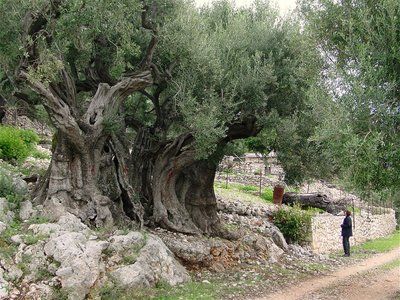Summer has finally arrived. It took a while, a long while this year, but now we can enjoy nice weather and our beautiful gardens. The extra rainfall (which continues to fall) has allowed many trees, shrubs and perennials to grow lush and full like never before.
As summer heats up, though, think about adding drought-tolerant plants, especially in areas that are hard to water.
Plant an olive tree
Olives can take the heat and are drought tolerant once established. They’re also easy to care for; they require little pruning and have few serious pests. Their grayish foliage and graceful, billowing appearance are a welcome accent to an all-green garden. The attractive gnarled branching pattern is also quite distinctive, and they can live for 500 years.
For ornamental purposes or next to paving, choose a fruitless variety, like Majestic Beauty, Swan Hill, Skylark Dwarf, Little Ollie or Wilsonii. If olives for eating are desired, Manzanillo and Mission are old favorites.
Olives can be traced originally to southern Turkey in about 3150 BC. The spread of the olive tree to the Mediterranean areas of Italy, France, Spain and Portugal probably coincided with the trade of wine, date palms and figs. They were introduced to California mission gardens in the 1700s for the oil their fruit yields. Many of the missions still have the original olive trees. Underplanted with drought-tolerant perennials, such as sedum “Autumn Joy,” yarrow, lamb’s ears, mimulus, Santa Barbara daisy or agastache, they can be a focal point in any garden.
Try something new
If you’re like me, you’ll find it’s fun to be out in the garden planting, tending and watching the garden grow. I love to add a new plant to a container or perennial bed. Planning, choosing and finally taking home a new addition are all part of the fun, and there are so many low-water-use, colorful perennials to choose from.
Coreopsis, a member of the sunflower family, attracts butterflies and bees and bloom all summer. In addition to the favorite Early Sunrise, try the dark-centered Tequila Sunrise with variegated cream-and-yellow foliage. The leaves have touches of pinkish red in spring and deeper red in fall. Then there are types with finely divided leaves, like Moonbeam, and new varieties, such as Mango Punch. Rusty-orange flowers with hints of yellow cover these low-growing perennials. The color is rich and blends with many color schemes. Or try Pink Lemonade coreopsis, with coral-pink flowers on yellow-green lacy foliage. Add one of these deer-resistant perennials to your garden and make the butterflies and bees happy, too.
Make time to tidy up
Garden to-dos this month include summer pruning of wisteria. To increase flowering next spring and keep these vines under control, cut new growth back to within 6 inches of the main branch. If you want to extend the height or length of the vine, select some of the new streamer-like stems and tie them to a support in the direction you wish to train the plant.
Another easy task is to remove scraggly foliage from strawberries when they stop producing. Be sure to fertilize both June bearers and everlasting types now. Heavy feeding of either type in spring leads to excessive plant growth, soft fruit and fruit rot, but they need a boost now.
Crowding leads to disease and lower yields of poorer quality fruit. To keep a plant from becoming too dense, remove runners, unless they’re needed to replace an older plant. If you do let some offsets grow, space them 7 to 10 inches apart. More offsets result in lots of smaller berries.
Jan Nelson, a landscape designer and California certified nursery professional at Plant Works in Ben Lomond, will answer questions about gardening in the Santa Cruz Mountains. E-mail her at ja******@*ol.com, or visit www.jannelsonlandscapedesign.com to view previous columns and pictures.











